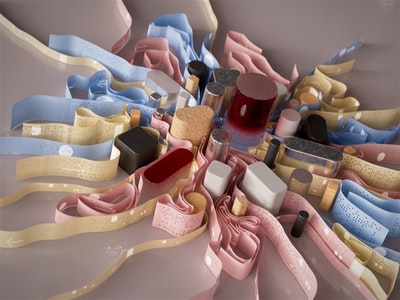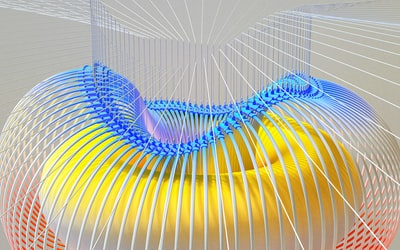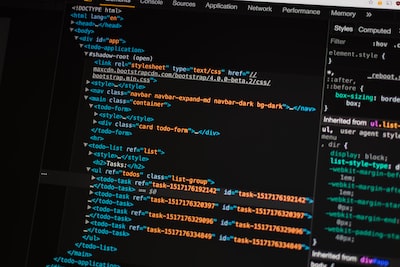As the world around us becomes increasingly digitized, creativity has become a highly valued and sought after skill. From graphic design to film production, art and creativity have always been key ingredients in the creative process.
However, with the advent of machine learning for creative professionals, we are now witnessing a revolutionary shift in creative thinking and output. This new technology promises to unleash the full potential of creativity by providing artists and designers with powerful computational tools to help them push the boundaries of what is possible.
With machine learning, creative professionals can now automate routine tasks, generate designs and images, and make decisions based on data insights, allowing them to focus more time on their artistic vision and less time on tedious tasks.
The impact of machine learning on creativity has been an explosive topic in the creative world–from graphic designers exploring new mediums to musicians experimenting with new sounds. The age-old question of whether computers can surpass the human mind has been a topic of debate for years, but as machine learning algorithms become more advanced, the answer might not be a simple one.
From the perspective of an artist, it’s a love-hate relationship with the technology. On the one hand, machine learning has opened up a world of possibilities, allowing creatives to reach heights previously unimagined.
On the other hand, there’s a fear that the very essence of art, its subjectivity and emotional depth, may be lost in the pursuit of precision. Despite this fear, there is no denying the paradigm shift that is occurring in the creative world.
The potential for collaboration with machines is enormous and surely will revolutionize the way we approach creative ventures. So, as we delve deeper into this frontier, one can only wonder, will machines ultimately replace human intuition, or will they finally bring it to its full potential?
Table of Contents
Introduction to Machine Learning in Creativity
Machine learning has revolutionized creativity, and it’s no longer a far-fetched concept. It has transformed the way professional artists and designers work, providing them with speed and precision.
With machine learning, processing millions of images and identifying patterns within them is feasible. Moreover, artists can generate countless variations of a design based on user input.
This dynamic technology is a game-changer that is swiftly reshaping the creative landscape. But what does this mean for the industry’s future? Will machines replace human creativity, or will they enhance it? The possibilities are exciting yet unsettling.
One thing is certain: machine learning is now an essential tool for creative professionals, both today and in the future.
Enhancing Visual Art with AI Assistants
The impact of machine learning on visual art is undeniable. AI assistants with their ability to analyze data, recognize patterns, and predict outcomes have become a game changer for artists.
They are bridging the gap between intuition and precision, empowering artists to experiment with new mediums, techniques, and styles without fear of failure. For example, Google’s Deep Dream can transform mundane photos into surreal masterpieces, while Adobe’s AI-powered Creative Cloud streamlines productivity and simplifies complex tasks.
But, is machine learning progress or peril for creative expression? Does AI eliminate the human touch, or does it inspire new ideas? Time alone will provide the answer.
Music Composition with Machine Learning
Do you ever wonder how your favorite artists create their mind-blowing works? They rely on the relationship between artistic intuition and precision, something machine learning has revolutionized for creative professionals.Machine learning is making waves in the music composition world by allowing musicians to explore new creative frontiers.
It can analyze vast amounts of data, from existing compositions to different musical styles, to generate new works in line with an artist’s preferences.This technology also enables musicians to experiment with new sounds and create music outside set boundaries.
Machine learning frees artists to delve deeper into the unknown territory of creativity.Although some may be skeptical about this development, machine learning gives artists endless possibilities to express themselves.
It’s an exciting game-changer for creatives eager to bring something fresh to the world.With even more advancements on the horizon, the power of machine learning in art and design is yet to be fully realized.
It’s an exciting time for the industry, one full of potential and magic.
Text Generation Tools for Writers
AI’s role in the creative process has been a hot topic of conversation lately. While machines can’t replace the unique touch of an artistic genius, AI is changing the creative landscape.
One example of this shift is text generation tools for writers. These tools allow writers to expand their vocabulary and take their creativity to new heights.
AI text generators can create compelling headlines, improve grammar structures, and even compose entire essays. Some concerns have been raised about relying too heavily on technology stifling creativity.
However, AI is undoubtedly here to stay. As it continues to advance and evolve, it will undoubtedly shape the creative industry in exciting ways.
Film Making with Machine Learning
AI has revolutionized the creative field, including filmmaking. Machine learning has enhanced storytelling through facial recognition, natural language processing, scene analysis, and color grading.
AI offers accuracy and efficiency to bring the filmmaker’s vision to life. AI technology also broadens the possibilities for impossible camera shots and photorealistic special effects that challenge filmmakers’ creativity.
With further advancement, AI will continue to open new doors for the film industry.
Future of AI in Creative Industries
The integration of machine learning is enhancing the creative output of AI in creative industries. While debates continue about the extent to which AI can replace human creativity, many creators and innovators are adopting this technology to perfect their work.
Machine learning algorithms are helping music composers and visual artists gain greater accuracy and precision in their creative processes, while maintaining their artistic intuition. With these tools, creators can analyze vast amounts of data, streamline their workflow, and discover new insights that wouldn’t be possible without AI.
Witnessing machine learning revolutionize the creative world is captivating, and the possibilities that will arise as technology advances are awe-inspiring.
Revolutionize Your Inbox Organization and Security with Cleanbox: The Ultimate AI Tool for Creative Professionals
If you’re a creative professional, chances are your inbox is overflowing with emails from clients, colleagues, and vendors. It can be tough to keep track of what’s important and what’s just spam.
Enter Cleanbox. This revolutionary tool uses advanced AI technology to sort and categorize your incoming emails, making it easy to distinguish between priority messages and junk.
But it’s not just about streamlining your inbox. Cleanbox also safeguards you from phishing and malicious content, protecting you and your work from cyber threats.
And with its clean and intuitive interface, using Cleanbox is a breeze for even the most technologically challenged among us. So if you’re ready to declutter your inbox and protect your creative work, give Cleanbox a try.
End Note
As we move towards a more technologically advanced world, it’s fascinating to see how artificial intelligence is being harnessed by creative professionals. Machine learning, with its ability to analyze huge amounts of data, identify patterns, and make predictions, could revolutionize the way we approach artistic endeavors.
However, it’s important to recognize the potential risks and ethical concerns that come with this technology. Creative expression is deeply personal, and its value lies in the human experience behind it.
While machine learning can enhance creativity, it should never replace it. As we continue to explore this exciting new frontier, let’s remember that art is about more than just data analysis – it’s about the emotion, intention, and humanity that we bring to it.




 in Wyoming
in Wyoming